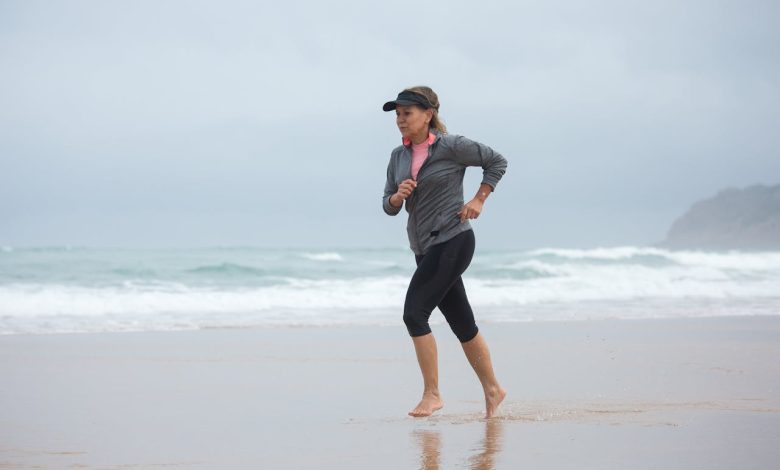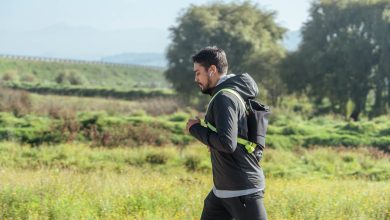What Is Rucking and Is It Better Than Regular Walking? Here’s What Personal Trainers Say

Rucking is a form of exercise that combines walking with the added challenge of carrying weight. Originating from military training, rucking has become popular among fitness enthusiasts looking to boost their workout without running or high-impact activities. But is rucking actually better than regular walking? Here’s what personal trainers have to say about the benefits, drawbacks, and potential of rucking as a fitness activity.
What Is Rucking?
Simply put, rucking involves walking with a weighted backpack. The weight can vary based on your fitness level and goals, but it’s typically 10–20% of your body weight. The term “ruck” comes from military lingo, referring to the heavy packs soldiers carry during training and missions. Rucking is an accessible, scalable workout that can be adapted for various fitness levels, from beginners to experienced athletes.
How Does Rucking Compare to Regular Walking?
Rucking and regular walking share some similarities, but the added weight in rucking brings a different dynamic and can amplify the physical benefits of a standard walk.
Key Differences Between Rucking and Walking
- Calories Burned: The added weight increases calorie burn compared to regular walking.
- Muscle Engagement: Rucking works muscles beyond those typically engaged in walking, especially in the upper body.
- Cardiovascular Challenge: The extra weight boosts heart rate, making it a more intense cardio workout than walking alone.
Benefits of Rucking
Personal trainers highlight several benefits that make rucking a worthwhile exercise, especially for those looking to challenge themselves beyond regular walking.
1. Increased Caloric Burn
- Why It Matters: Carrying weight significantly increases calorie expenditure. According to trainers, rucking can burn 30-50% more calories than regular walking at the same pace, making it a good choice for weight loss or weight maintenance.
- Who It’s For: Anyone looking to add an extra challenge to their walking routine to aid in weight loss.
2. Strengthens Core and Upper Body Muscles
- Why It Matters: While walking primarily engages lower body muscles, rucking also works the core, shoulders, and back. This helps build strength in these areas and improves overall muscle tone.
- Who It’s For: People seeking a low-impact workout that builds upper body strength without traditional weightlifting.
3. Improves Cardiovascular Fitness
- Why It Matters: The added weight means your heart has to work harder, increasing the intensity of the workout. Over time, this can improve cardiovascular endurance and heart health.
- Who It’s For: Those aiming to boost cardiovascular fitness without running or high-impact exercises.
4. Boosts Mental Resilience
- Why It Matters: Rucking requires endurance and patience, particularly as the weight can make the workout more challenging. Personal trainers note that rucking can be a great mental challenge, helping build resilience and focus.
- Who It’s For: Anyone who enjoys a physical and mental challenge in their workouts.
5. Accessible and Scalable
- Why It Matters: Rucking is relatively simple to start—you just need a sturdy backpack and some weights, such as weight plates, sandbags, or even household items. You can adjust the weight and distance as your fitness level improves.
- Who It’s For: Beginners who want a scalable workout and experienced exercisers seeking a customizable way to add intensity.
Drawbacks and Considerations
While rucking has many benefits, there are some things to consider before incorporating it into your routine.
1. Risk of Injury
- Carrying weight can strain your shoulders, back, and knees if not done correctly. Personal trainers advise starting with lighter weights and gradually increasing to avoid injuries.
- Tip: Ensure the weight in your backpack is evenly distributed, and use a backpack with padded shoulder straps for support.
2. Not Suitable for Everyone
- People with existing joint issues, back pain, or knee problems should approach rucking with caution. Consulting with a trainer or physical therapist can help determine if rucking is appropriate for your fitness level.
- Tip: If you’re dealing with joint pain, focus on regular walking or start with low weights.
3. Requires Proper Form and Posture
- Rucking with poor posture can lead to discomfort or injury, especially in the neck, shoulders, and lower back.
- Tip: Focus on standing tall, engaging your core, and keeping your shoulders back to maintain good posture throughout the workout.
How to Get Started with Rucking
If rucking sounds like a good fit, here’s how personal trainers suggest you get started:
- Choose the Right Weight: Start with a weight that’s 10% of your body weight, especially if you’re new to rucking. Gradually increase the weight as you build strength and endurance.
- Use a Supportive Backpack: Look for a backpack designed for carrying weight, preferably one with padded straps and a chest or waist strap for added support.
- Practice Good Posture: Keep your back straight, shoulders down, and core engaged to prevent strain. Check your posture throughout your walk to avoid slouching.
- Start Slow: Begin with shorter distances (like 1-2 miles) and gradually increase as you feel more comfortable.
- Listen to Your Body: Stop if you experience pain or discomfort, especially in your joints. Adjust the weight or take breaks as needed.
Rucking vs. Walking: Which Should You Choose?
Ultimately, both rucking and walking offer great benefits and can be beneficial depending on your goals and fitness level:
- Choose Rucking If: You’re looking for a low-impact way to burn more calories, build upper body strength, and increase cardiovascular fitness without running.
- Choose Walking If: You’re focused on a gentle, steady workout that supports cardiovascular health and is easy on the joints. Walking is ideal for beginners, those with joint concerns, or those seeking a more relaxed workout.

